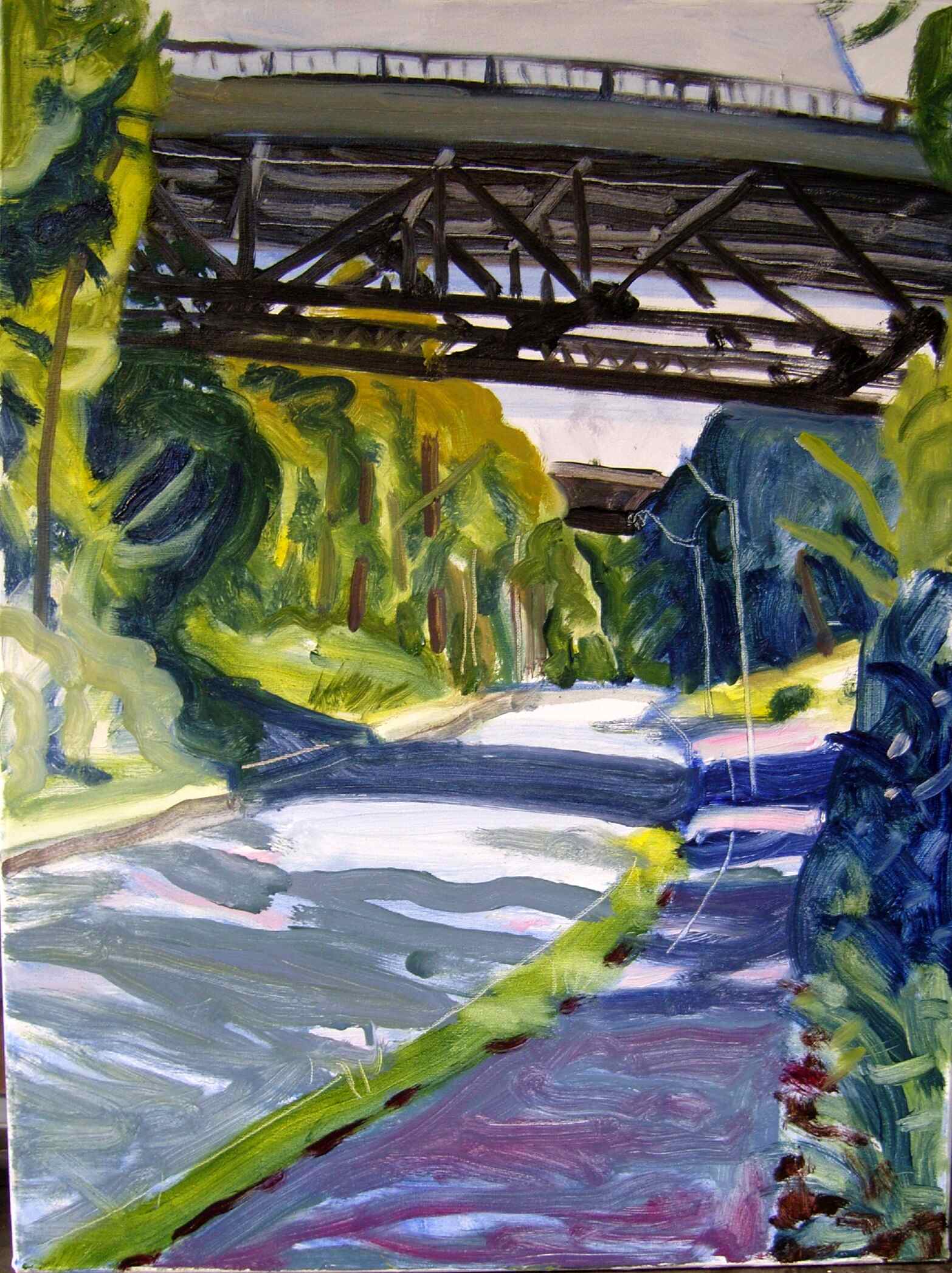I painted a landscape in the Rosedale Ravine on a brilliant sunny Wednesday in September.

Thursday the light was the same, and I went out to do another the same size, intending them to be hung as a pair.

Following an instinctive bias that puts objects in a series proceeding left to right like words on a page, I hung the Wednesday picture on the left, and the Thursday picture on the right.


Frankly, I was disappointed. The two paintings exhibiting the same subject, the same size and color scheme didn’t help each other as I expected they would: each reinforcing the other by reprising pictorial tactics and stratagems. The two pictures were sullen and mute. They seemed to resent each other.
I resisted switching them because Wednesday’s came first and so it naturally had to be on the left . . . But when I did switch them, they locked together with an almost audible click as a comprehensible pair.


The picture on the left now leads the eye to the picture on the right instead of struggling to direct attention away from it. The picture on the right now resolves and restores the deep space thrust of the strong diagonal emanating from the lower left corner of the left picture.
How did that happen?
Some Compositions feel Safe, Others feel Dangerous
In a survey of French Impressionist landscapes from 1863-1890, perhaps the most beloved paintings in Western art, an intriguing compositional bias can be detected.
If a French Impressionist painting is divided into four sections by two lines: one centred vertically and the other horizontally, the vast majority of examples organize space in a similar manner.
The area in the lower left quadrant depicts the space closest to the viewer. The upper left quadrant depicts the space farthest from the viewer and the two quadrants on the right.are equidistant in the middle ground.
One explanation may be that Western eyes are trained from the habit of reading from left to right to enter the fictive space of a painting from the left side, scan it left to right, reach the edge and re-enter the painting again from the left.
Studies have shown that paintings from cultures that read right to left balance the composition of a painting differently,
There may be another cultural habit at work which makes paintings representing a clear view of a receding space to the left more popular, and which makes this composition predominant in our most beloved paintings.
This response is more basic than the literacy habit and may be influenced by a more primitive section of the brain. The midbrain controls vision, action and the “fight or flight” response. https://en.wikipedia.org/wiki/Midbrain
The midbrain does not register the space depicted in a picture as fictional. It registers an actual, unfamiliar and potentially dangerous terrain.
The fictive space of a landscape painting can appear hospitable and safe, or forbidding and dangerous (in other words: esthetically pleasing or not), depending on whether and how much it excites the “fight or flight” response in the midbrain.
Of two spatial situations: one with a clear view of deep space to the left, and another with a clear view of deep space on the right, the former will feel more secure to a right-handed individual because it is easier to defend with a rock or a stick.
The weapon can be swung forehand or hurled at any approaching menace.
Open approaches from the right are more dangerous for the right-handed individual who would have to pivot 180 degrees to the right before a forehand blow could be struck or a rock thrown.
For this reason, the fictive space of a painting is viewed as more pleasant when there is receding space on the left and unsettling when the space is organized the opposite way.
The midbrain will permit the viewer to relax and enjoy one kind of composition and keep him or her tense in the other.
That is another reason why we are drawn to the paintings we love.